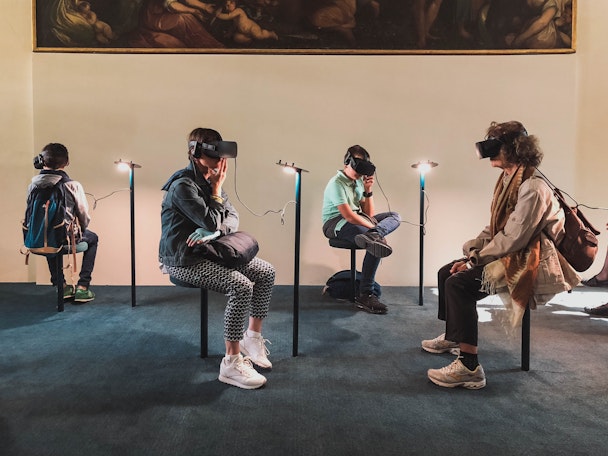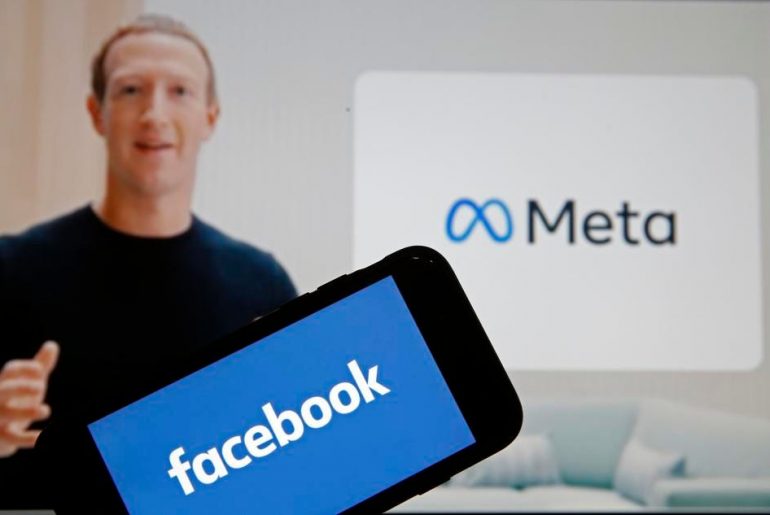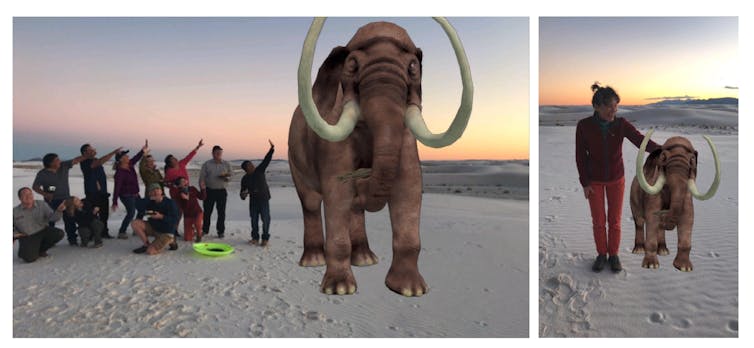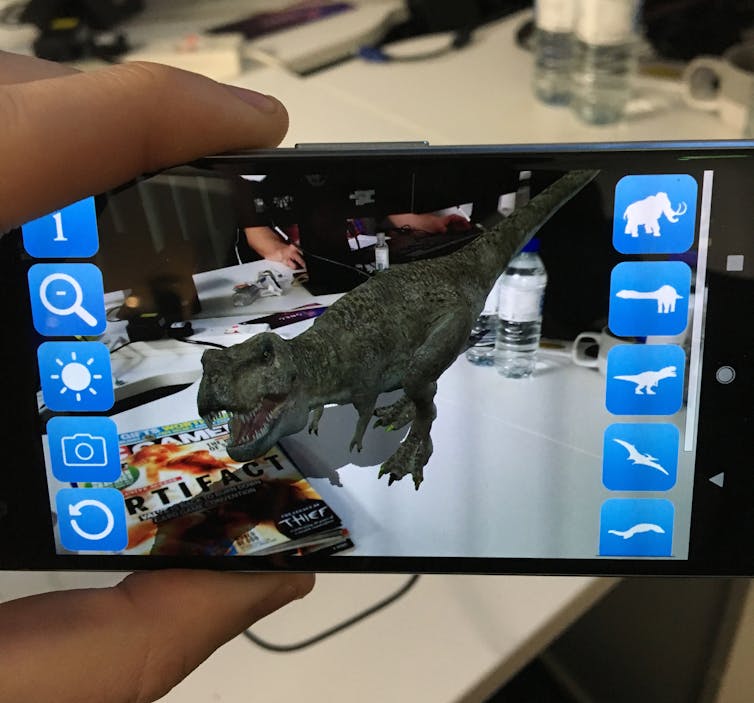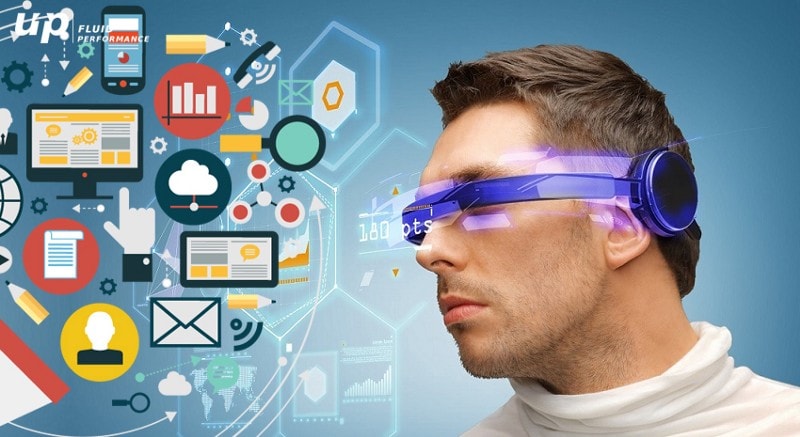By Webb Wright
Whether it’s Meta, a MetaMask or the metaverse, here’s an explanation for many of the most commonly-used web3 terms.
Airdrop. In the crypto world, an airdrop is a free distribution of tokens or coins from a company directly into its users’ or members’ wallets.
Altcoins, or alts, are cryptocurrencies that are relatively new to the market and have relatively low valuations. A conjoining of the words ‘alternative’ and ‘coin,’ the term ‘altcoin’ initially was used to refer to any cryptocurrency that wasn’t Bitcoin.
Augmented reality (AR). A technology that combines elements of virtual reality (VR) with physical reality. In its current form, AR can be facilitated by devices worn over the eyes – such as glasses or goggles – or by a smartphone or computer screen. Pokémon Go is one common example of AR, because it blends virtual information with one’s physical environment.
Avatar. An avatar is a digital rendering of a human being or other entity in VR, a video game, the internet or another virtual space.
Bitcoin is at the time of writing the most valuable cryptocurrency in the world. It was also the world’s very first cryptocurrency, postulated by ‘Satoshi Nakamoto’ (which is typically presumed to be a pseudonym) in a now-famous white paper called ‘A Peer-to-Peer Electronic Cash System’ in 2008.
Blockchain. A ‘blockchain’ is a distributed digital ledger that’s used to record transactions. It’s an immutable database, which means that information can’t be tampered with or altered once it’s been recorded. If there’s an error in an entry, then a new, revised entry must be made, and both entries will subsequently be visible on the ledger.
The name comes from the fact that a blockchain stores data in ‘blocks,’ individual units that are linked, or ‘chained,’ together. New data is filed into blocks – and blocks are subsequently chained together – in chronological order, so a blockchain becomes longer and longer as more information is added to it. Each new piece of information is also assigned a timestamp, which makes it easy for users to find out exactly when it was linked to the database. The transparency and immutability of the blockchain makes it a very reliable and trustworthy business resource both for individuals and companies.
Block. A block, the constituent element of a blockchain, is an individual unit in which data is stored.
A bridge, in a web3 context, is a protocol which links blockchain systems together, allowing users from one system to send assets and information to another.
To burn an NFT is effectively to send it into oblivion, the closest thing to destroying it completely. Nothing that’s been coded on the blockchain can be deleted, so anyone who wants to delete (burn) an NFT has to send it to a smart contract that nobody can access.
Centralized system. This is a system that is controlled and organized according to a rigid hierarchical structure. In such a system, power and decision-making authority is concentrated in the hands of a relatively small number of individuals at the top of the hierarchy. Corporations, for example, are centralized systems.
A consensus mechanism is a system that validates transactions and encodes new information on a blockchain. The most common consensus mechanisms are Proof-of-Work (PoW) and Proof-of-Stake (PoS).
Cryptography. A word derived from the Greek ‘kryptos’ meaning ‘hidden’ – this is the process of using mathematics to encode and protect sensitive information from malicious actors.
A crypto winter is a period of steep decline within the cryptocurrency market, resulting in the loss of huge sums of money for some investors.
DAO. A Decentralized Autonomous Organization, colloquially referred to as a ‘DAO,’ is an organization that is controlled by its members and not subject to the authority of any single individual or entity. Unlike a traditional corporation or government, they are completely free of hierarchical, top-down structures. Its codes of conduct are recorded on a blockchain to ensure transparency and decentralization. Participation in a DAO is usually accessed through the acquisition of a digital token.
Dapp. A decentralized application, colloquially called a dapp, is an application constructed on the blockchain. Dapps function autonomously, according to the stipulations in smart contracts. Like any other application on your phone, dapps come with a user interface and are designed to provide some kind of practical utility.
A decentralized system is one that’s controlled in equal measure by each of its constituent parts. Blockchains – the technological framework for web3 – are decentralized, meaning that no single individual, corporation or other entity is able to exert a disproportionate degree of control over how they are constructed and run.
DeFi. Decentralized finance, or DeFi, refers to a financial system built upon the blockchain, and therefore fully distributed and not subject to any centralized authority, such as a bank, government agency or financial management firm.
Digital twin. This is a virtual rendering of a physical object. But a digital twin is more than a mere three-dimensional simulacrum – they’re designed, ideally, to be as dynamic and environment-dependent as the objects they’re imitating. For example, let’s say a team of engineers is making structural improvements to a bridge. They could design a simulation of that bridge, a simple 3D model, which would allow them to make basic measurements and study the overall structure. But that simulation wouldn’t be able to tell them much about how the wind, the traffic or any other number of more subtle environmental factors have been impacting the integrity of the bridge. To study those processes, they might distribute sensors over the bridge in order to create a digital twin. This would allow the team to create a much more informative model.
Ethereum is a decentralized blockchain network built by Vitalik Buterin in 2015. The open-source network is home to its native cryptocurrency, also called Ethereum but more commonly known simply as Ether or ETH (there’s some debate about whether it’s pronounced ‘eth’ or ‘eeth’). The Ethereum platform also gave rise to smart contracts – a subject we’ll dive into another week. As of March, ETH is the second most-valuable cryptocurrency in the world, after Bitcoin.
Extended reality. Also commonly referred to as ‘XR,’ extended reality is a category of multiple technologies – including VR, AR and mixed reality (MR) – which, in various ways, blend virtual worlds with physical reality.
Fiat money. Not to be confused with the car brand, fiat money is a term used to refer to any kind of currency that has been declared legal tender by a government body. (The declaration itself is often called a fiat.) Fiat money isn’t backed by any intrinsically valuable commodity, such as precious metals like gold and silver. Instead, the value of fiat money is determined by the fluctuations of supply and demand. Paper money, like the US dollar, is fiat money.
Fiat money is subject to an economic force called ‘variable supply,’ which means the governing body that issued the fiat can control its value by tweaking a variety of levers, such as the adjustment of interest rates. Cryptocurrency, which is not subject to the authority of any centralized authority, is often positioned as the opposite of fiat money.
“Floor price” refers to the lowest price for which a product or service can sell at an auction. This is a common phrase to encounter on NFT auction platforms, such as OpenSea.
Fungibility. A term used in economics to refer to a commodity that is precisely equal in value and therefore exchangeable with other identical versions of that same commodity. A $1 bill, for example, is fungible, because it can be exchanged for any other $1 bill – they have the same value and therefore, for all intents and purposes, are identical.
Gas. In the context of web3, gas refers to a fee that’s required in order to execute a smart contract or transaction on Ethereum blockchain. Gas, which is often denominated in a very tiny fraction of an ETH called a WEI, is paid to node operators, AKA miners.
“GM,” a common greeting on social media among web3 enthusiasts, means “good morning.”
Gwei. The smallest denomination of the cryptocurrency ETH is called Gwei. 1 ETH is worth 1bn Gwei.
HODL is a common acronym used in the crypto space, which stands for ‘hold on for dear life.’ It’s typically invoked at times when the crypto market is undergoing some dramatic fluctuations and investors are feeling nervous, as in: “Don’t sell just yet, the markets will recover and your investments will bounce back if you just HODL.”
Interoperability, in web3-speak, refers to the ability of multiple blockchains to cooperate and exchange information with one another, enabling virtual assets (such as non-fungible tokens [NFTs]), avatars and other pieces of code to move seamlessly from one platform to another.
IRL. Shorthand for ‘in real life,’ IRL is an acronym commonly used in the web3 space to describe a person, place, thing or event in physical – as opposed to virtual – reality.
Layer 1 (L1) blockchains are the foundations of multi-level blockchain frameworks. They can facilitate transactions without support from other blockchain networks. All layer 1 blockchains – including Bitcoin and Ethereum – offer their own native cryptocurrency as a means of accessing their networks.
Layer 2 (L2) blockchains are built on top of layer 1 blockchains, often enhancing the latter’s performance and expanding its accessibility. Polygon, for example, is a popular layer 2 blockchain that allows users to enjoy the benefits of using the Ethereum network without having to go through that network’s relatively slow transaction speed and costly fees.
Liquidity is a term used in economics to describe the degree to which an asset can be converted into either cash or some other asset.
A main network, or mainnet, is a finalized version of a blockchain that is fully developed and available for public use.
Meatspace refers to the physical world, ie the tangible counterpart to the virtual world of the metaverse. It may not be the most elegant of terms, but it’s been catching on among tech circles.
Meta. Facebook Inc changed its name to Meta (officially Meta Platforms Inc) as part of the company’s pivot toward the metaverse. There are many who mistakenly believe that the metaverse is a technology owned by Meta.
MetaMask is a software built for the Ethereum blockchain that functions as a crypto wallet.
Metaverse. ‘The metaverse’ is not synonymous with ‘web3.’ The former is the virtual landscape that’s accessible via VR technology, whereas the latter is a term that’s commonly used to describe the next evolutionary stage of the internet. ‘Web3’ is inclusive of blockchain, cryptocurrency, the metaverse and other emergent technologies.
Minting is a term used to describe the process of registering a digital asset on the blockchain, thereby turning it into a purchasable NFT. Once an NFT has been minted, given the nature of the blockchain it cannot be altered. Minting NFTs on the blockchain requires a vast amount of energy, which has led many to criticize the blockchain and its proponents.
Mixed reality, or MR, is a technology that, like AR, blends virtual and physical components. Unlike AR, however, MR allows the user to interact with virtual elements in more or less the same way that they would in the real world. Looking through an MR headset at your real, actual dining room table, for example, you might see a virtual potted plant sitting on top of it, which you can then pick up and put down, just as you could with a physical, tangible houseplant.
NFT. A non-fungible token, or NFT, is a collection of data stored on a blockchain that is non-interchangeable – in other words, it can’t be replicated into multiple copies of equal value in the same way that, say, US quarters can be replicated and exchanged with one another. (See definition for ‘fungible’ above.)
NGMI is a popular slang acronym in the NFT space, meaning ‘not gonna make it,’ and used to refer to a campaign or specific token that is unlikely to attain a high value. Its opposite, WGMI – ‘we’re gonna make it’ – is also commonly used.
Off-chain transactions do not take place on a blockchain network, but they can subsequently be incorporated into a blockchain. The parties to off-chain transactions must consent to use an intermediary third-party to validate the transaction. (Note: “Off-chain” can also refer to data that exists separately from the blockchain.)
On-chain transactions are executed, verified and recorded on a blockchain network. Once completed, the record of these transactions is viewable for all members of the associated blockchain network. (Note: “On-chain” can also refer to data that exists on the blockchain.)
P2P. Peer-to-peer, or P2P, is a term used to describe a network of individual computers exchanging information with one another without the oversight of a central server. Management of a P2P network is distributed among its constituent computers.
PAOP. A Proof of Attendance Protocol, or POAP, is a virtual token that serves as evidence – also commonly called a ‘badge’ – that an individual attended, either virtually or IRL, a particular event.
Private key, in crypto-speak, is an alphanumeric code that must be entered by a user in order to access one’s wallet or authorize an exchange of blockchain-based assets or currency.
Proof of Stake, or PoS, is a system for validating transactions and establishing new blocks in the blockchain. It’s a consensus-based mechanism, with each validator’s role in the process being directly proportional to the size of their stake in the cryptocurrency that’s involved in the transaction.
Proof of Work, or PoW, is another system for establishing consensus and building new blocks in the blockchain. A PoW mechanism requires each participant in a cryptographic process to submit proof that they have expended a certain amount of contributory computational effort.
Public key is an alphanumeric code that’s connected with a particular wallet. Analogous to a bank account number, a public key is a code that other users would input to send assets directly into your wallet.
Redpilled is a slang term used to describe a situation in which someone’s worldview – or their perspective on a specific issue – has undergone a sudden and dramatic shift. The phrase refers to the famous red pill from The Matrix film franchise, which basically symbolizes the decision to swallow a hard and uncomfortable truth about oneself or about the nature of reality.
Smart contracts are blockchain-based computer programs that are designed to automatically go into effect as soon as the parties privy to the contract have fulfilled their respective obligations. Once they’ve been coded and their terms have been agreed upon, they become fully automated, which negates the need for any facilitating third party. Because they’re built upon the blockchain, transactions made via smart contracts can be closely monitored – but can’t be tampered with after the fact – by the parties involved.
A test network, or testnet, is a blockchain where developers can test the functionality of new protocols, before activating them on a mainnet.
Tokenomics, a blending of the words ‘token’ and economics, is an umbrella term that refers to all of the various qualities of a virtual currency that can cause its market value to fluctuate.
TradFi is tongue-in-cheek shorthand that some in the crypto community use to refer to ‘traditional finance’ – basically the pre-DeFi paradigm of centralized financial authority, in which governments, banks and other institutions control and regulate currency.
Virtual reality (VR) is a technology that creates three-dimensional, immersive digital environments, wherein visitors can interact with other people (or rather, their avatars) and other elements of the environment. VR technology, though still in its infancy, has been advancing rapidly. Meta’s Oculus Quest headset is an example of a piece of hardware that can transport the wearer to VR worlds.
Wallet. A crypto wallet is an application that stores and protects the keys to blockchain-based assets and accounts. (See definitions for ‘private key’ and ‘public key’ above.)




